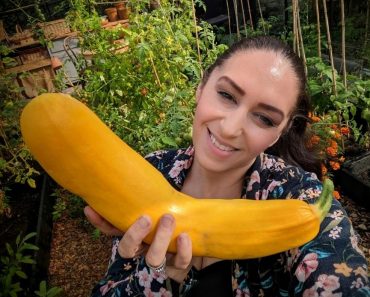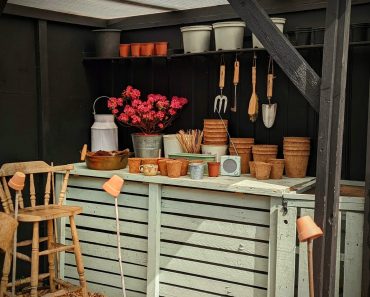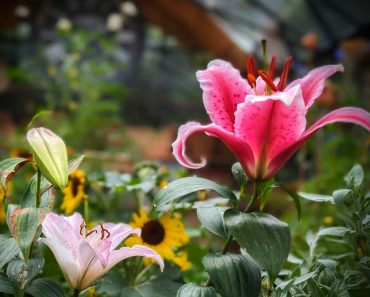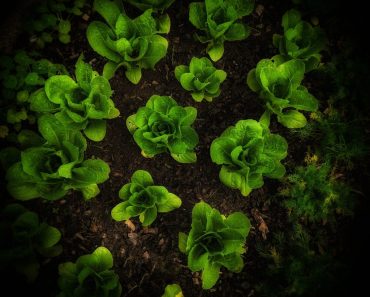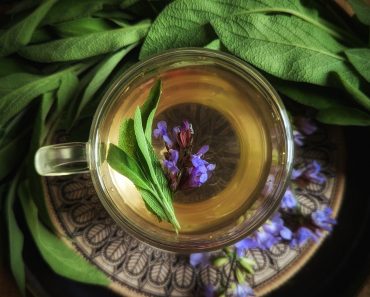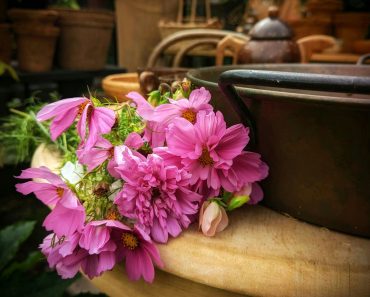Making Your own Nettle and Comfrey Homemade Fertiliser/Plant Feed couldn’t be easier! Just 3 ingredients gets you a powerful tonic which will bolster plant health and encourage growth. Here’s how I make it…

Why Make Your Own plant Fertiliser?
What you should be asking is…Why wouldn’t you? Shop bought plant feed and fertiliser can be expensive and most of the time it contains chemicals that aren’t particularly good for your plants or the soil they grow in. Homemade fertiliser is easy, inexpensive and far more eco friendly than most mass produced Plant Feeds. It’s a no brainer! Make your own, save a few quid and help the environment too!
Just 3 Ingredients!
All you need is Comfrey, Nettles and Water…sounds simple enough doesn’t it? While the list is small the benefits are HUGE! Let’s break it down…
Comfrey
First, what is Comfrey? Comfrey (Symphytum officinale) is a perennial herb and a member of the Boraginaceae family, which also includes Borage, Lungwort and forget-me-nots.
Comfrey is quite a distinctive plant with its thick hairy stems and Purple Bell like flowers it certainly stands out! The leaves are large and oblong and the plant itself can reach heights of 2-5 ft

Want to learn how to grow Comfrey?
What makes Comfrey a good Fertiliser?
Comfrey has a very deep taproot and a large root system, this is handy because it allows the plant to pull up all those lovely nutrients from way down in the subsoil level, were most other plants cannot reach! This unique ability fills the comfrey plant with precious nutrients including Phosphorus, Nitrogen and Potassium…everything a growing plant needs!
When Comfrey decomposes its high carbon to nitrogen value means that it does not take nitrogen from the soil, but provides it! In other words… it’s a giver not a taker!
Comfrey And The Big 3
Comfrey is full of Nitrogen, Phosphorus and Potassium all essential nutrients for healthy plant growth! But what does each one actually do?…

Nitrogen
Nitrogen is a very important tool for supporting plant growth! Nitrogen is part of the chlorophyll molecule, which gives plants their lovely green colour! It is also vital in providing food for the plant through the process of photosynthesis. As an example…A plant that lacks Nitrogen will develop Yellowing leaves (chlorosis) and became lank, the Nitrogen that feeds the plant and helps with green leafy growth is absent and so the plant shows decline.
Phosphorus
Phosphorus can help a plant in so many ways! Here are just a few…
- Strengthens stalks and stems
- Promotes vigorous growth
- Improved flower and Seed production
- Helps with root development
- Enhanced plant quality
- Improved resistance to plant diseases
- Earlier crop maturity
Potassium
Potassium aids root growth and can improve drought resistance in plants, it can also prevent loss of energy and aids photosynthesis and food formation.
Nettle
What Is Nettle? Nettle or Stinging Nettle (Urtica dioica) is an herbaceous plant that can spread widely and quickly thanks to its Creeping underground rhizomes.
There will be few people whom have not seen a Nettle plant or at least felt its sting! The toothed leaves are covered with numerous stinging and non-stinging trichomes (plant hairs) and stems can reach heights of up to 8 ft tall if left unchecked

What makes Nettle a good Fertiliser?
Sting Nettle contains all the good stuff…
- Nitrogen
- Magnesium
- Iron
- Potassium
- Calcium
- Copper
- Zinc
- Chlorophyll
Making Nettles, not only wonderful for other plants but for the body too! Check out My Nettle Tea!
But what does Nettle actually do for plant health? Nettles have many benefits but to summarise, the most important components in Nettles are nitrogen, chlorophyll & plant polyphenols, these elements bolster plant health and encourage growth. Making Nettles a valuable ingredient to any plant fertiliser
Let’s get to it! How Do You Make Nettle and Comfrey Homemade Fertiliser?
This is a nice balanced Homemade plant feed, rich with all the natural nutrients that nature provides, no chemicals are added! Making this, a safe and natural eco friendly Plant feed alternative. Here’s how I do It…
Useful Tools For Foraging…
Affiliate links
Ingredients
- Comfrey Leaves
- Nettle Stems and Leaves
- Water (Try to use non-chlorinated water from the water butt if possible)

Method
- First, Harvest Comfrey and Nettle (be sure to wear thick gardening gloves to avoid stings)
- Find a large container, bucket or barrel..something that can be covered. I used a large drinks dispenser
- Pack chopped or torn Nettles and Comfrey tightly in the container and cover with water
- Fashion some sort of lid and allow the leaves to stew. Place in a sunny spot outdoors.
- Check Back every few weeks. It should take roughly 3-6 weeks to ferment
- Once you have seen the leaves break down and a smelly brown liquid is created, its ready to use!
- Pour the brown liquid into a bottle.
- To use, dilute 1 part fertiliser to 10 parts water. Place in a Watering can and feed!

How Long Will Nettle and Comfrey Plant Feed Keep?
If you keep it in an airtight container or bottle…I would say its good for up to 1 year!
Other ways To Use Comfrey Leaves In The Garden
Use as a mulch: Add a layer of chopped or torn leaves as a mulch around the base of plants, water them in to prevent them flying away!
Add them to compost: Add comfrey leaves to compost bins to speed up the composting process and add beneficial nutrients!
Use In the soil: Line the bottom of your planting holes with a handful of Comfrey leaves then plant on top-The leaves will slowly decompose and release their nutrients to the plants above
Other ways To Use Nettles In The Garden
Ladybirds: Ladybirds Love Nettles! Keep a small nettle patch in your garden so they can lay their eggs….The eggs will turn into ladybird larvae, which will then feed on garden pests, such as aphids, red spider mite and whitefly.
Trap Crop: Aphids love nettles, acting as a ‘sacrificial’ plant, so your other plants stay Aphid free!
Compost Activator: Add Chopped nettles (not roots) to your compost bins to speed up the decomposition process.
Looking for Other Budget Friendly Garden DIY Hacks?
Make a Free DIY Crazy Paving Path
Growing A Garden?
Looking For more ‘Homely’ Inspo ?
Have a Nosey Around the Blog! See what i’ve been Baking, Growing and Drinking! Also, pop over and say Hi on Instagram

